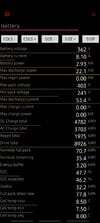Sorry if this has been asked before, I did search.
Regarding the battery charge percentage as displayed in the Tesla App or car display - what is 100% in terms of KWh? Not as straightforward as it looks. For example, I read that Tesla keeps back some of the battery capacity to account for degradation over time, so if my battery is 70KWh, does this mean that "100% charge" is actually 63KWh?
My car is a 2021 M3LR MIC , so I believe the battery's quoted capacity is either 75 or 82KWh (that is from Wikipwedia, but how do I tell for sure?).
Reason for asking is, I get an increase in charge percentage showing in my app, and given the capacity would like to work out how much electricity has been used during a home charging session.
Regarding the battery charge percentage as displayed in the Tesla App or car display - what is 100% in terms of KWh? Not as straightforward as it looks. For example, I read that Tesla keeps back some of the battery capacity to account for degradation over time, so if my battery is 70KWh, does this mean that "100% charge" is actually 63KWh?
My car is a 2021 M3LR MIC , so I believe the battery's quoted capacity is either 75 or 82KWh (that is from Wikipwedia, but how do I tell for sure?).
Reason for asking is, I get an increase in charge percentage showing in my app, and given the capacity would like to work out how much electricity has been used during a home charging session.



